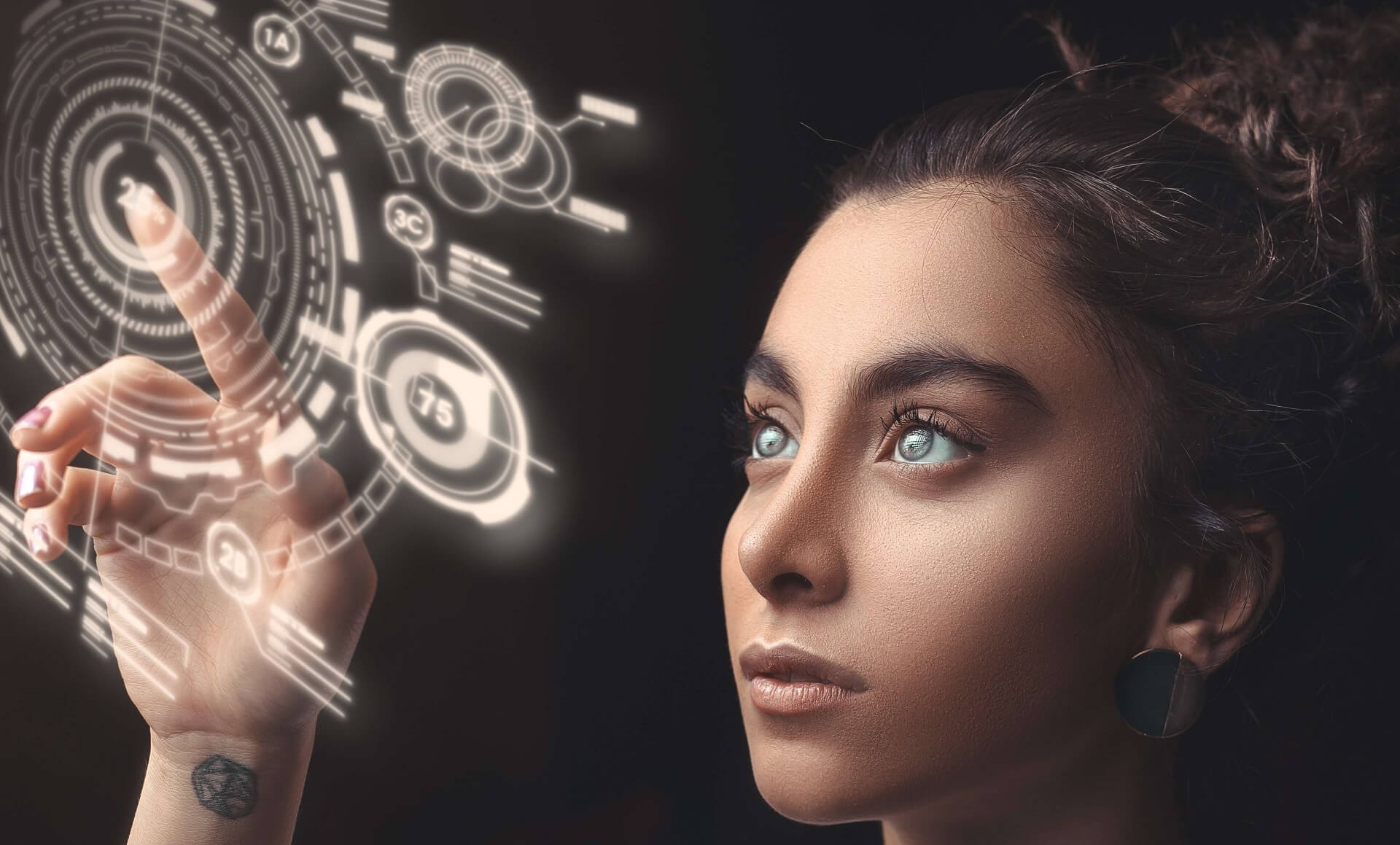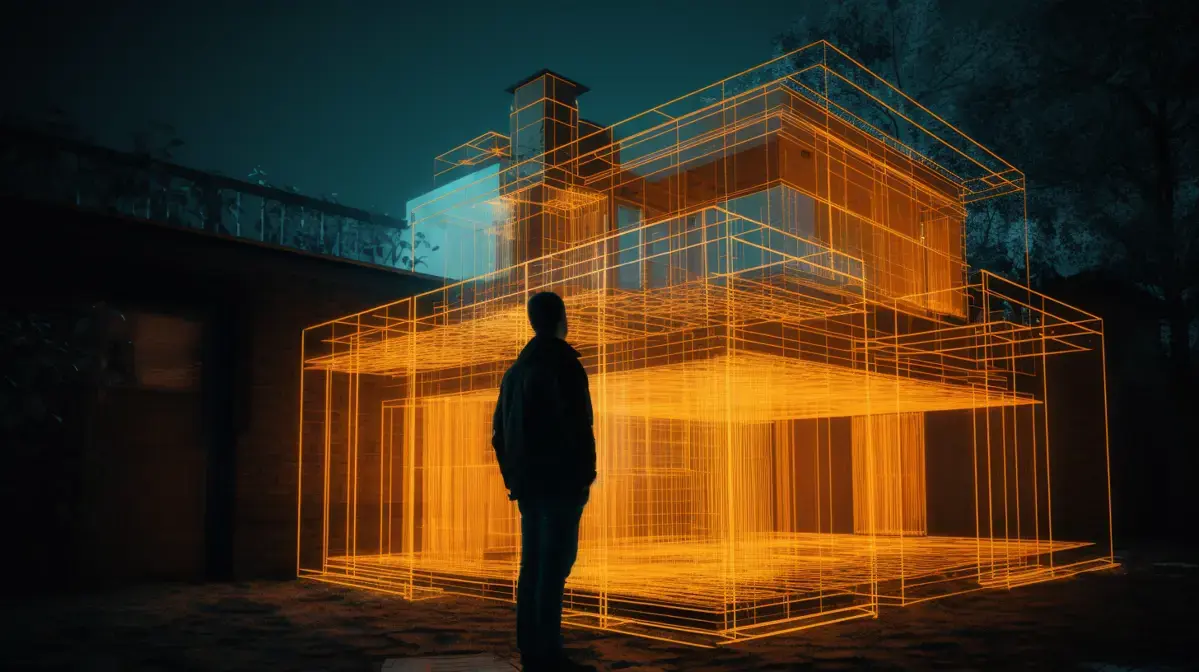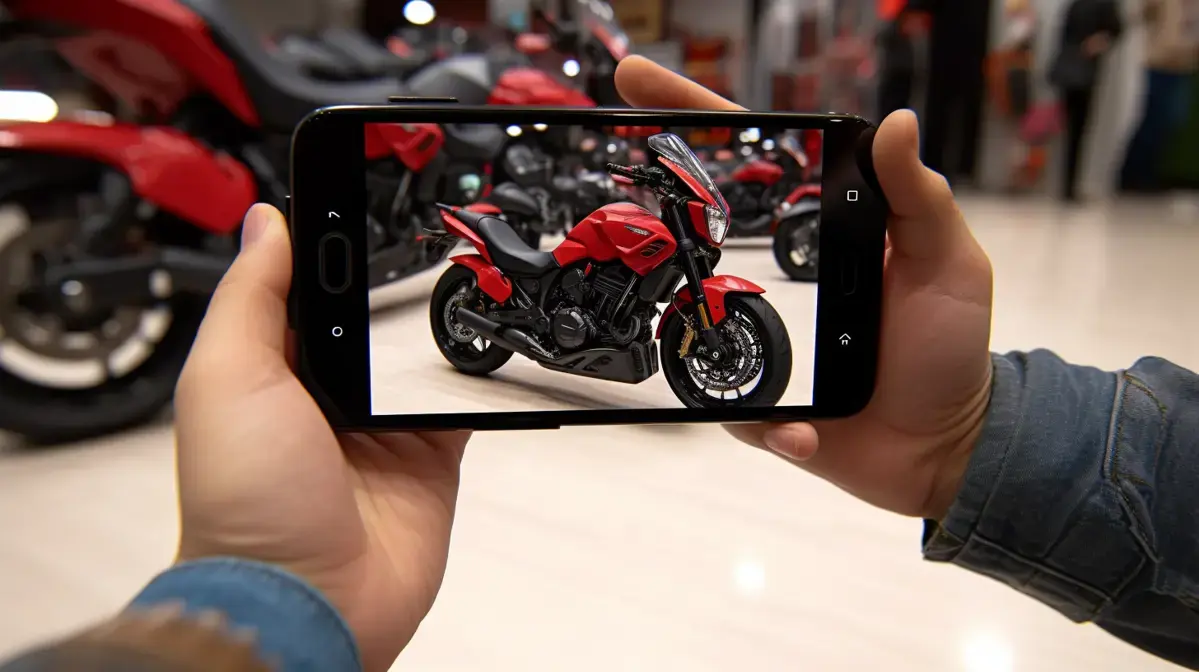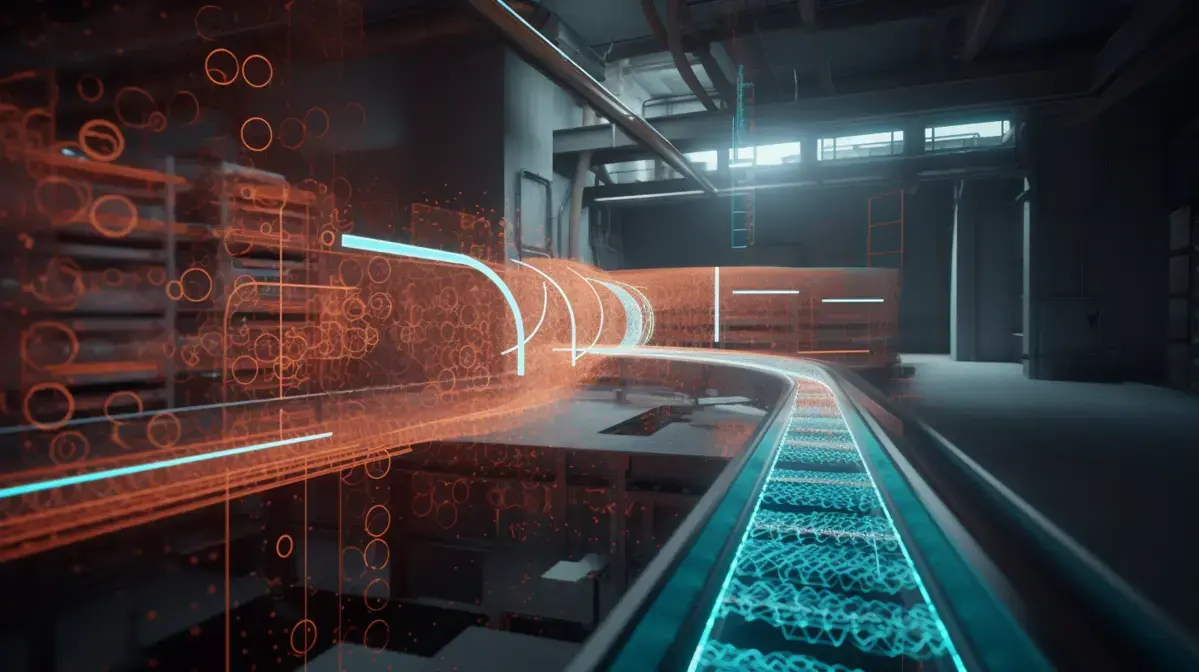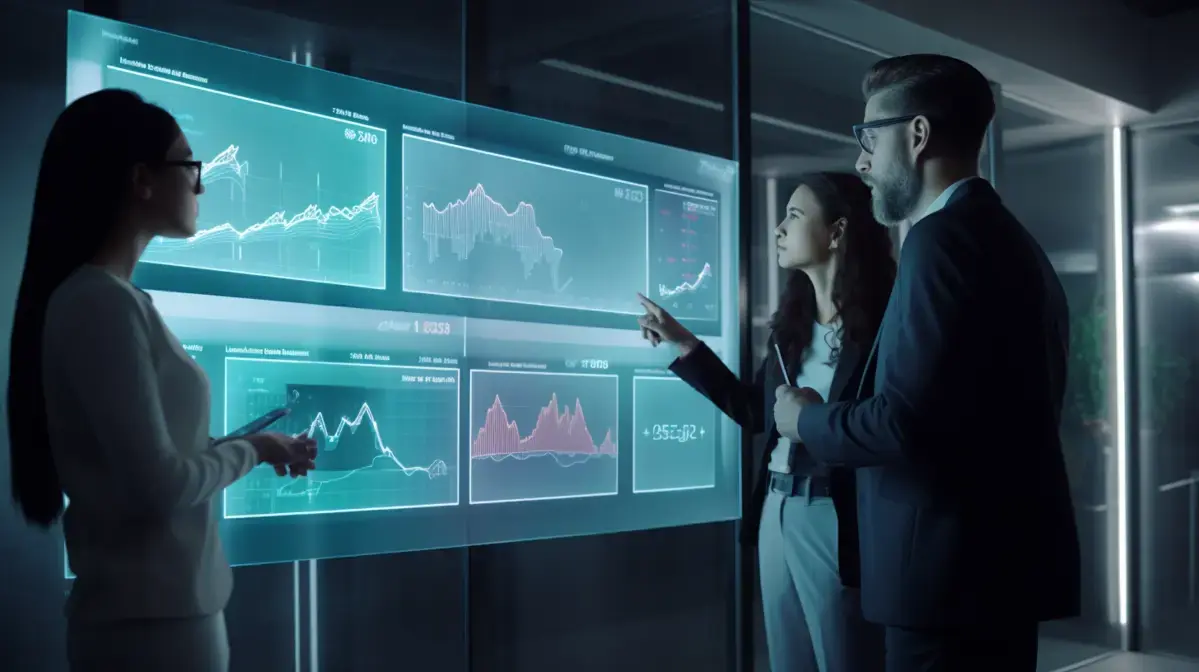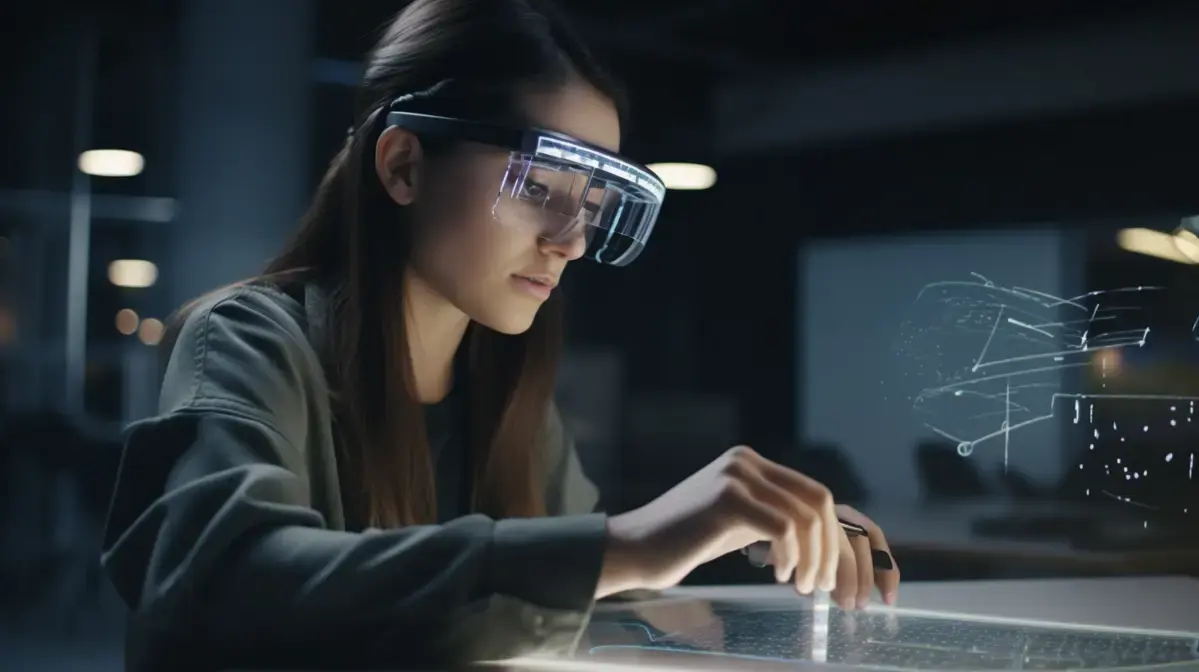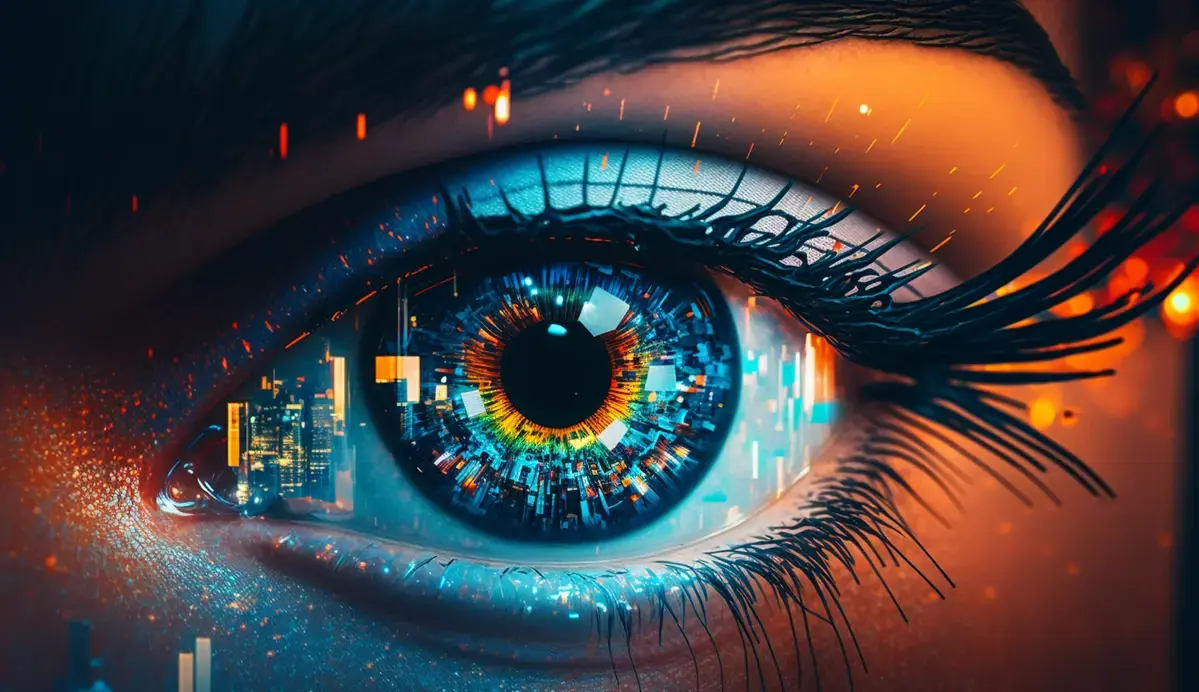Table Of Contents
- Key Points
- Streamlining Operations and Improving Efficiency with Augmented Reality Tools for Retailers
- Future Outlook: The Evolution of Retail Industry with Advancements in Augmented Reality
- Introduction: Understanding Augmented Reality in Architecture Design
- Interesting Facts
- Advantages of Using Augmented Reality in the Design Process
- How Augmented Reality Enhances Collaboration Among Architects and Clients
- Integrating Virtual Objects into Real Spaces with Augmented Reality Technology
- FAQs
- The Role of Smart Devices in Immersive Architectural Visualization using AR
- Overcoming Challenges of Implementation and Integration of AR Systems for Architects
- Impact on Cost-Efficiency, Time-Saving, and Productivity With Augmented Reality In Architecture.
- Key Takeaways
Augmented Reality (AR) is transforming the architecture industry by allowing architects to create virtual models of buildings and structures. With AR technology, architects can visualize their designs in 3D and see how they fit into existing environments before construction even begins. This saves both time and money, as it reduces errors during the design phase.
One major advantage of using AR in architecture is that it enables clients to experience a building as if it already exists on-site. Clients can get a better understanding of what their new structure will look like through interactive walkthroughs, which enhances communication between them and designers.
Moreover, with the use of Augmented Reality tools such as mobile devices or wearables connected wirelessly to BIM (Building Information Modeling), professionals are able to perform tasks more efficiently while maintaining accuracy at all times.
To learn more about Augmented Reality’s impact on architectural design processes checkout argeopin.com for further insights.

Key Points
- Augmented Reality allows architects to visualize designs in a real-world context, improving decision-making and reducing errors.
- The use of AR technology in the design process can lead to more efficient communication between designers, clients and contractors.
- AR enables the creation of immersive experiences for clients, allowing them to better understand and interact with proposed designs before construction begins.
- The integration of AR into BIM software streamlines project management by providing an interactive platform for collaboration among team members.
Streamlining Operations and Improving Efficiency with Augmented Reality Tools for Retailers
Augmented Reality (AR) is a technology that has been around for over two decades, but it’s only in recent years that its potential has truly come to light. As an English born Augmented Reality expert, the author can attest to just how powerful AR can be when used in retail settings. With AR, retailers are able to create unique and interactive experiences for their customers right within their physical stores.
Imagine walking into a clothing store and being able to see how different outfits would look on you without even having to try them on. That’s exactly what several retailers have done with the help of AR technology. By using augmented reality mirrors or screens placed inside the fitting rooms or throughout stores, customers are now able to see 360-degree views of themselves trying on different apparel items from various angles.
Beyond virtual fitting rooms, there are many other applications where we’ve seen successful use cases of augmented reality such as product demonstrations which showcases products features by digitally augmenting objects with information about dimensions materials etc., coupled with immersive shopping experiences which drive customer engagement – personalised content via mobile phone apps that seamlessly connect digital assets like social media feeds or reviews directly into physical locations using geolocation data.
The ability for augmented reality tech solutions streamline processes all across retail value chains is continually changing: intelligent inventory management systems boost productivity whilst increasing accuracy; faster checkout times through RFID-enabled payments simplify transactions – these improvements save time making shopping easier than ever before.
The power of Augmented Reality cannot be understated. It’s exciting yet practical application means this innovative tool holds huge promise going forward as it unlocks new ways businesses operate by connecting everything from warehouses through delivery while enabling richer consumer interactions at every touchpoint along way- expanding possibilities far beyond imagination.
Future Outlook: The Evolution of Retail Industry with Advancements in Augmented Reality
Augmented reality (AR) has been transforming the retail landscape in recent years. The technology uses computer-generated images or videos to overlay the real-world environment and enhance consumer experiences. As an English born AR expert, he has witnessed first-hand how AR can revolutionize the way consumers shop.
He remembers a time when buying furniture meant hours of traveling to different stores and deciphering confusing instruction manuals. With AR, customers can now visualize products in their homes before making purchases, eliminating costly mistakes from ordering mismatched pieces that don’t fit into their spaces.
One example is Ikea Place – an app that allows users to preview thousands of Ikea products overlaid onto any room using their smartphones or tablets. Customers no longer have to rely on guesswork but instead use this digital tool for creating realistic 3D renderings of furniture arrangements within seconds.
Another area where augmented reality is thriving is fashion retail – imagine being able to try clothes on without stepping foot inside a physical store. Uniqlo’s “Magic Mirror” does just that – it lets shoppers try on virtual clothing items by superimposing them over live video streams captured by cameras installed at select locations worldwide.
Augmented Reality is here with us today; its power and capabilities are constantly expanding across various sectors such as healthcare education entertainment marketing etcetera.it provides customers with previously unimaginable experiences- allowing them access almost unlimited possibilities while saving money, time ,and other resources. Augmented Reality ensures we stay ahead in our view point as one rapidly evolving industry .
Introduction: Understanding Augmented Reality in Architecture Design
Augmented Reality (AR) has rapidly transformed the world of architecture design, enabling architects and designers to visualize their creations in ways that were once impossible. AR technology allows users to superimpose digital information onto real-life objects, creating an interactive and highly immersive experience.
As a born-and-bred English Augmented Reality expert, I’ve been fortunate enough to witness firsthand how AR is revolutionizing the way architects approach their craft. It’s truly exciting stuff – imagine being able to walk through your building designs before they’re even built or having clients see exactly what their future spaces will look like.
One particularly memorable project for me involved designing a new school campus using AR technology. As we walked around the empty plot of land where construction would soon commence, we could use our devices to place 3D models of buildings and structures onto the physical space before us. We were able not only to see how everything would fit together but also gain a better understanding of how different materials might interact with light at various times throughout day or night.
Another example came when working on hotel projects – luxury hotels require high-end finishes that can be quite expensive if mistakes are made during construction. With AR tech available now though? You can have confidence in knowing exactly what every inch looks like well before you put any money into real-world materials.
In short: augmented reality is changing architecture forever by allowing designers more creative freedom than ever while also saving time over traditional methods such as blueprints.
Interesting Facts
-
- The use of augmented reality in architecture allows for a more immersive and interactive design process.
- AR technology can help architects visualize and test out different design concepts in real-time, reducing the need for costly physical models.
- With AR, clients can also experience a virtual walkthrough of their future building or space before construction even begins.
- The use of AR is not limited to just architectural designs – it has also been used in urban planning to simulate the impact of new buildings on surrounding areas.

Advantages of Using Augmented Reality in the Design Process
Augmented Reality (AR) continues to revolutionize the way architecture design is done. From creating 3D models of buildings to enabling architects and clients to visualize structures in real-time, AR technology has become an essential tool that improves precision and saves time.
It always amazes me how far we have come with AR technology. I remember when designing a building meant sifting through countless blueprints and sketches for hours on end, which wasn’t just frustrating but also left a lot of room for error. Today, augmented reality has transformed the industry by allowing professionals to view their designs from different angles with impressive accuracy.
Imagine being able to walk around a virtual version of your dream home or commercial property before it even exists. With AR software like Vuforia Studio or Unity3D ProBuilder offering astonishing levels of detail right down to individual bolts on steel shapes used for construction purposes – gone are the days where you are forced into trying your luck with two-dimensional drawings alone.
Furthermore, Augmented Reality makes communicating complex architectural concepts simpler than ever before; both designers and potential customers alike can now better understand these things once only accessible via specialized training courses thanks largely due adoption rates skyrocketing as more people become familiarized they start realizing what this new frontier may hold – simply put: it’s game-changing.
How Augmented Reality Enhances Collaboration Among Architects and Clients
Augmented Reality (AR) is a technology that has revolutionized the Architecture Design industry. With AR, designers can create immersive visual experiences by overlaying digital information onto physical spaces. This allows for real-time collaboration between architects and clients, making it easier to communicate ideas and ensure that designs meet specific requirements.
As an English-born AR expert, I have seen first-hand how this technology has transformed the way we approach design projects. When I began my career in Architecture Design over a decade ago, there were limited options available to bridge the gap between what was drawn on paper and what could be realized in real-world scenarios. But now with AR as our tool of choice – our designs are not just static images but dynamic holographic representations.
One of my favorite anecdotes about using AR involves designing a new office space for one of our corporate clients – DigiTech Solutions Inc. They had been struggling with finding ways to optimize their workspace when they reached out for help from us at The Creative Studios Inc. By integrating Augmented Reality into their project proposal process – we were able to show them multiple options all while standing right inside the actual space they wanted renovated. It made them more confident in our expertise and ultimately helped build trust throughout each step leading up until completion.
Augmented Reality is not some esoteric concept reserved solely for forward-thinking tech companies or visionaries; it’s accessible today by everyday people working towards improving various industries such as healthcare or architecture design.
Integrating Virtual Objects into Real Spaces with Augmented Reality Technology
Augmented reality (AR) is a game-changer for the architecture industry, bringing new possibilities to the design process. With AR, architects and designers can now create stunning 3D visualizations of their designs that clients can walk through before construction even begins. This technology has revolutionized how architects work by enabling them to create immersive experiences for their clients.
As an English-born AR expert with over ten years of experience in this field, I have seen firsthand how powerful this technology is when applied to architecture design. One memorable project involved designing a luxury hotel in Dubai using AR. The client was able to visualize every aspect of the hotel before it was built – from the lobby and guest rooms down to individual pieces of furniture.
Another instance where I saw first-hand just how transformative AR could be occurred during my time working on a hospital project in London. The hospital wanted us as designers not only to incorporate different features into our designs but also take into account those who will use these spaces daily such as doctors and nurses so they would have easy access without disrupting patients’ privacy or progress towards getting better results after surgery or injury treatment which we were able tp do thanks due Augmented Reality ‘walkthroughs’.
Augmented reality has changed everything about architecture design -from speeding up project timelines and increasing accuracy levels while enhancing creativity.
FAQs
1. What is augmented reality in architecture?
Augmented reality is a technology that overlays virtual information or objects onto the real world, enhancing one’s perception of their environment. In architecture, it can be used to visualize designs and simulate how they would look in the real world.
2. How does augmented reality benefit architects?
Augmented reality allows architects to visualize their designs in 3D and assess them on-site before construction begins, reducing errors and saving time and money during the design process. It also enables clients to experience a more immersive representation of proposed designs.
3. Are there any downsides to using augmented reality in architecture?
One potential downside is that some people may find viewing virtual models through a headset or other device uncomfortable or disorienting. Additionally, implementing AR technology may require additional training for staff members who are not familiar with its use.
4.Can Augmented Reality be used beyond just visualization purposes for architectural design?
Yes. In addition to visualizing building components as holograms overlaid onto physical environments through devices such as Microsoft’s HoloLens goggles , AR has been successfully implemented by designers for informing workforce management during facilities maintenance processes amongst other industrial applications.

The Role of Smart Devices in Immersive Architectural Visualization using AR
Augmented reality (AR) has gained a foothold in the world of architecture, and it’s not difficult to see why. With AR technology, architects can now create building designs that are more interactive than ever before. They can add layers to their existing plans and make them come alive for clients by showcasing how the end result will look like.
As an English born augmented reality expert, I have seen many instances where AR technology has been used effectively in architecture design projects. I was once part of a project where we were tasked with designing a complex hospital facility housing over 1000 beds. Using AR, we created an immersive experience for our client where they could walk through each room and hallway as if they were already built.
AR makes it easier for architects to convey their ideas by presenting them visually rather than using technical drawings or blueprints which might be challenging for some clients to comprehend fully. Moreover, using this cutting-edge tech helps reduce errors that may occur during construction since all stakeholders involved would have had an opportunity first-hand experience what should be expected at every stage of development
Architectural designers who embrace Augmented Reality are innovative problem solvers who understand how emerging technologies like this one help bridge gaps between technical aspects on paper/plans with real-time experiences/visualizations making it easier both coming up with fresh perspectives when planning out new designs. All this while reducing uncertainties during actual constructed works progressions – bringing advantages such as increased efficiency , precision accuracy aspect coupled style is evolving.
Overcoming Challenges of Implementation and Integration of AR Systems for Architects
Augmented Reality (AR) is a technology that has taken the world by storm, and the architectural industry is no exception. As an English born AR expert with experience in architecture design, it’s fascinating to see how this emerging technology has transformed how we perceive spaces. Through AR, architects have been able to create immersive designs that allow clients to experience their future projects before they’re even built.
The use of Augmented Reality in Architecture Design offers many benefits for both architects and clients alike. It allows designers to provide realistic visualizations of their proposed structures while saving time and resources typically required for physical models or renderings. Moreover, it offers a unique level of interactivity between designers and clients – one where people can explore spatial relationships from different angles as if they were standing right inside them.
One anecdote comes straightaway into mind: during one particular project, the architect was having trouble communicating his vision effectively with his client through traditional methods like 2D drawings or static renders until he introduced him to an augmented reality model of his building design concept using HoloLens headset. The client could observe every detail from various perspectives virtually, thus quickly understanding what exactly he would get upon completion.
Augmented reality provides profound possibilities for innovative architectural design experiences – ones that are both efficient and engaging at once.
Impact on Cost-Efficiency, Time-Saving, and Productivity With Augmented Reality In Architecture.
When it comes to architecture design, Augmented Reality (AR) is the buzzword on everyone’s lips. But what exactly is AR? Essentially, it’s a technology that enhances our real-world experience by adding virtual elements such as 3D models and animations. Architects are now able to use this technology to create designs that can be viewed in stunning detail and from all angles.
As an English-born Augmented Reality expert, I’ve seen firsthand how AR has revolutionized the architecture industry. It allows architects not only to visualize their designs but also gives clients a chance to see them come alive before they are built – saving time on costly revisions further down the line.
One of my favorite examples of AR being used in architectural design was for London-based studio Zaha Hadid Architects’ Serpentine Pavilion project back in 2016. Using an app installed onto mobile devices connected via GPS tracking systems or WIFI means you could ‘place’ their pavilion within its natural surroundings with ease. The application allowed visitors inside or out-of-state who may never have been possible due-to travel restrictions still enjoyed some aspects while seeing others through augmented reality at home.
In short: whether you’re designing residential homes or skyscrapers downtown; Augmenting your designs will elevate them beyond just physically beautiful constructions into fully immersive experiences for both designers and clients alike- boundless creativity awaits.
Conclusion
Augmented reality is ushering in a new era of design and architecture. It has transformed the way architects visualize and present their ideas to clients. With AR, designers can create lifelike simulations that help clients better understand how their buildings will look before construction even begins. This not only saves time and money but also allows for greater collaboration between designer and client. Moreover, AR technology fosters creativity by allowing for experiments with different designs without needing to physically construct them.
It’s clear that AR technology has revolutionized the design process in architecture by making it more efficient, cost-effective, collaborative, creative and ultimately providing an immersive experience to those who explore architectural spaces virtually or physically through built structures.
As innovative as it may be, now some skepticism arises about this tool no longer being perceived as a novelty or gimmick but instead becoming an industry-standard like BIM software solutions did years ago. Nevertheless, augmented reality offers endless possibilities within the architecture world which are exciting opportunities for both commercially-driven projects aiming at gaining competitive advantage over rivals, as well research-based initiatives meant towards experimentation with environmentally-friendly materials among others. The potentialities of this tool remain waiting just around every corner hoping for forward-thinking architects willing enough to grab hold of its full capabilities while trying out something new along the way.
Key Takeaways
-
- Augmented reality technology is revolutionizing the design process in architecture by allowing architects to visualize concepts in a virtual environment.
- AR tools can help with accurate measurements, cost estimation and project management, leading to more efficient projects and better outcomes.
- The use of AR has also improved communication between architects, clients, and construction workers.
- The integration of AR into the design process is expected to become more widespread as technology advances and becomes more accessible.
